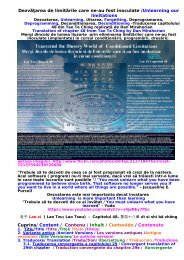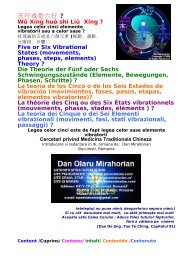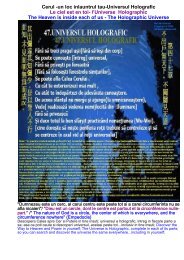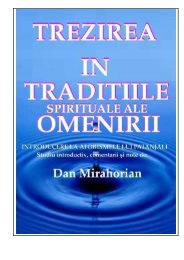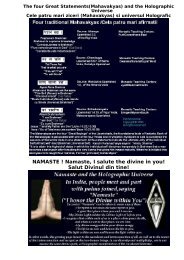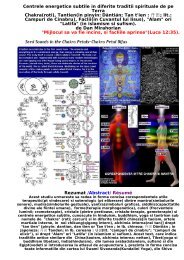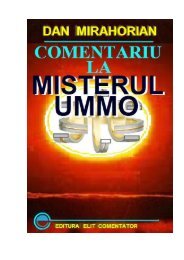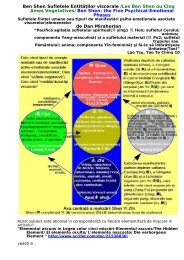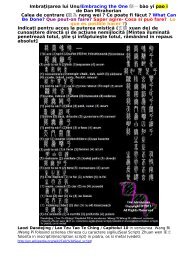Udana Vayu: localizare :gat si cap; centru ... - Dan Mirahorian
Udana Vayu: localizare :gat si cap; centru ... - Dan Mirahorian
Udana Vayu: localizare :gat si cap; centru ... - Dan Mirahorian
You also want an ePaper? Increase the reach of your titles
YUMPU automatically turns print PDFs into web optimized ePapers that Google loves.
Simbol purtat ca amuleta(protectie magica), <strong>si</strong>ngur sau impreuna cu alte doua<br />
hieroglife: Was(sceptrul, care desemneaza puterea) <strong>si</strong> Djed(coloana vertebrala a zeului<br />
egiptean O<strong>si</strong>ris, care desemneaza sanatatea ori stabilitatea <strong>si</strong>stemului energetic subtil,<br />
alcatuit din anale(nadis,jing luo) <strong>si</strong> centre( chakra; tan t’ien; dantian)<br />
Ankh (☥, 'cheia vietii', <strong>si</strong>mbol de protectie magica, 'crucea cu ansa') a fost un caracter<br />
hieroglific egiptean tradus prin viata, "viata eterna", apa care este utilzata in purificare<br />
triliteral <strong>si</strong>gn for the consonants ˁ-n-ḫ. Egyptian gods are often portrayed carrying it by<br />
its loop, or bearing one in each hand, arms crossed over their chest.<br />
Nodul lui I<strong>si</strong>s(tyet, tiet, thet) tradus prin "viata", "sange" ori "bunastare"<br />
"the knot, the girdle or the blood of I<strong>si</strong>s(identificata cu mama universala, zeita<br />
fertilitatii)"<br />
The tyet is an ancient Egyptian symbol of the goddess I<strong>si</strong>s; its exact origin is unknown.<br />
In many respects the tyet resembles an ankh, except that its arms curve down. Its<br />
meaning is also reminiscent of the ankh, as it is often translated to mean “welfare” or<br />
“life.” It seems to be called "the Knot of I<strong>si</strong>s" because it resembles a knot used to<br />
secure the garments that the Egyptian gods wore. The meaning of "the Blood of I<strong>si</strong>s" is<br />
more obscure, but it was often used as a funerary amulet made of a red stone or of<br />
glass. It is also speculated that the Tyet represents the menstrual blood flow from I<strong>si</strong>s'<br />
womb and its magical properties.<br />
It is mentioned in the 156th spell for the Book of the Dead:




